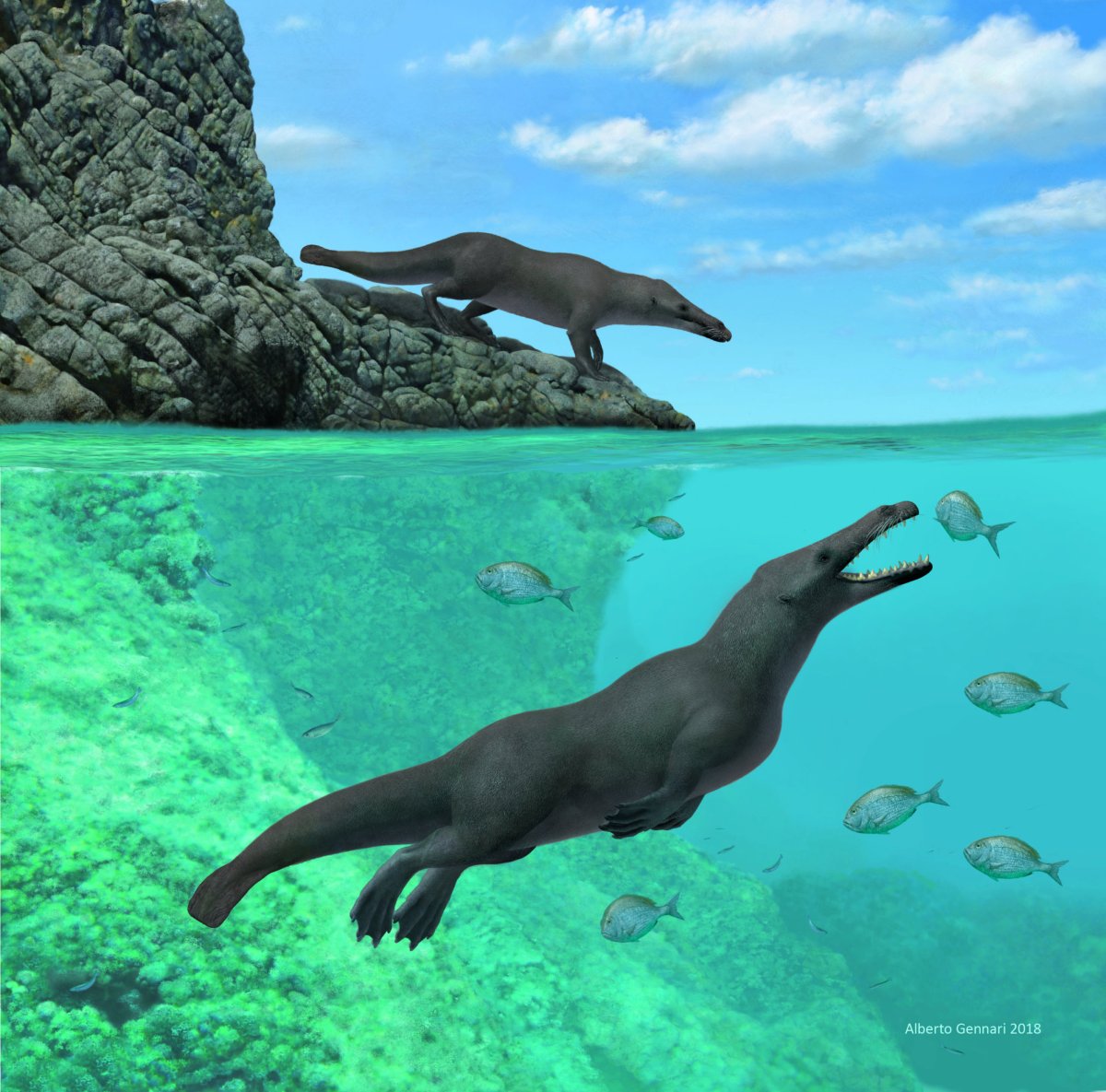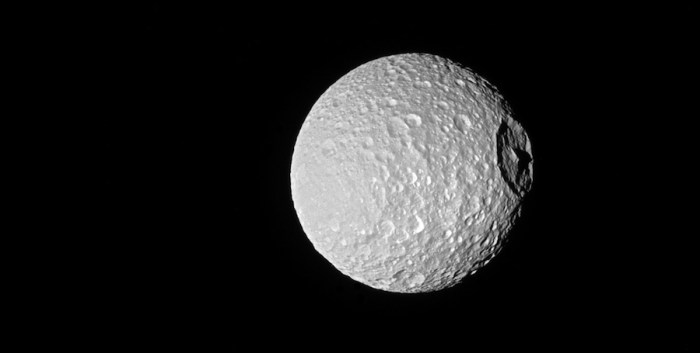(Reuters) – Scientists have unearthed fossils in a coastal desert of southern Peru of a four-legged whale that thrived both in the sea and on land about 43 million years ago in a discovery that illuminates a pivotal stage in early cetacean evolution.
The 13-foot-long (4-meter) mammal, named Peregocetus pacificus, represents a crucial intermediate step before whales became fully adapted to a marine existence, the scientists said on Thursday.
Its four limbs were capable of bearing its weight on land, meaning Peregocetus could return to the rocky coast to rest and perhaps give birth while spending much of its time at sea. Its feet and hands had small hooves and probably were webbed to aid in swimming. With long fingers and toes, and relatively slender limbs, moving around on land may not have been easy.
Its elongated snout and robust teeth – large grasping incisors and canines along with flesh-shearing molars – made Peregocetus adept at catching medium-size prey like fish.
“We think that it was feeding in the water, and that its underwater locomotion was easier than that on land,” said Royal Belgian Institute of Natural Sciences paleontologist Olivier Lambert, who led the research published in the journal Current Biology.
“Some vertebrae of the tail region share strong similarities with semi-aquatic mammals like otters, indicating the tail was predominantly used for underwater locomotion,” Lambert added.
Whale evolutionary origins were poorly understood until the 1990s when fossils of the earliest whales were found. Various fossils have shown that whales evolved a bit more than 50 million years ago in Pakistan and India from hoofed, land-dwelling mammals distantly related to hippos and about the size of a medium-sized dog. It took millions of years for them to spread around the world.
Peregocetus represents the most complete quadrupedal whale skeleton outside India and Pakistan, and the first known from the Pacific region and the Southern Hemisphere.
Its presence in Peru, Lambert said, suggests quadrupedal whales spread from South Asia to North Africa, then crossed the South Atlantic to reach the New World. Peregocetus shows that the first whales to reach the Americas still retained the ability to move on land.
Over time, cetacean front limbs evolved into flippers. The hind limbs eventually become mere vestiges. It was not until about 40 million years ago that the whale lineage evolved into completely marine animals, then split into the two cetacean groups alive today: filter-feeding baleen whales and toothed whales like dolphins and orcas.
(Reporting by Will Dunham; Editing by Sandra Maler)






















